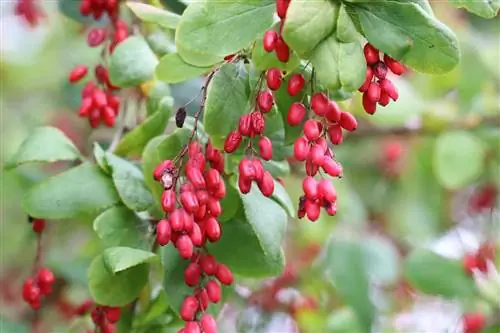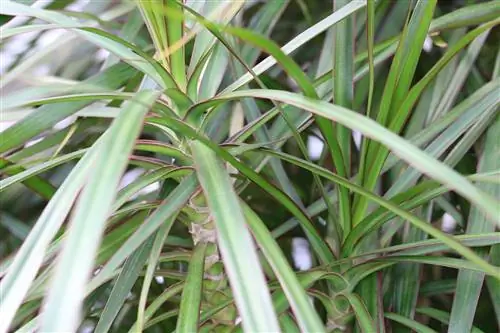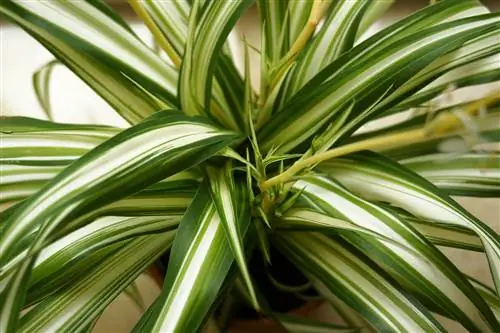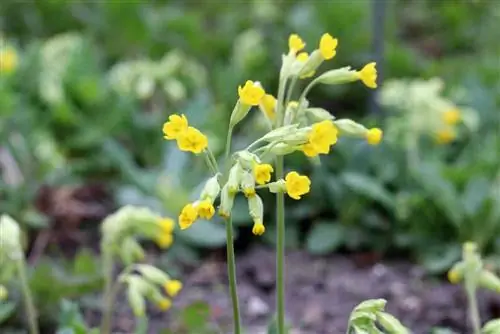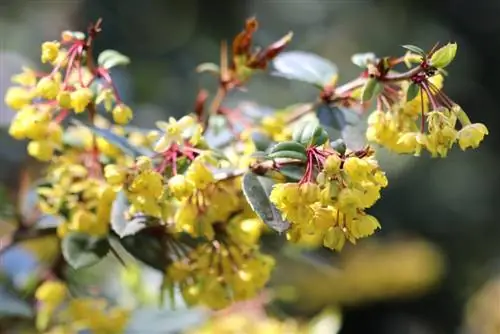- Author admin [email protected].
- Public 2023-12-17 03:39.
- Last modified 2025-01-24 12:45.
Barberries are well protected against a variety of predators. The main reason for this is the thorns. You can find out in this article whether other parts of the plant are also protected due to poison.
Barberry: ingredients
Berberis vulgaris is one of the slightly poisonous plants that contains a cocktail of toxic alkaloids in a variety of plant parts. Affected plant parts are:
- Root bark (highest poisonous effect)
- Roots
- trunk bark
- Leaves
- Wood
It is precisely these parts of the plant that fortunately have the least irritating effect on humans and are in most cases not consumed. In particular, the thorny leaves and shoots should be mentioned, which could cause injuries if they come into contact. That makes it even more popular as a hedge. The flowers and berries, however, are non-toxic. They do not contain any toxins and can be consumed without any concerns. The toxins it contains are various alkaloids, the main one being berberine. Berberine has significant toxicity, which accounts for the majority of poisoning episodes. Other alkaloids such as berbamine or palmatine do not have as strong an effect on the body.
The toxicity depends on the concentration of the ingredients within the plant parts:
- Roots: up to 15 percent
- other plant parts: up to 3 percent
Other ingredients in barberry include vitamin C, which is found in the fruit and is good for your he alth.
Tip:
Only the fruits and flowers of the commonly cultivated barberry are suitable for consumption. All other barberry species also deposit toxins in these parts of the plant.
Toxic effects on humans
Despite their mild toxicity, barberries have one big advantage: except for the berries, they are inedible. The “spines” also have a deterrent effect because they are quite long. For this reason, most people stay away from the plant and poisoning only occurs in certain scenarios:
- in care
- unsupervised children
- Confusion with other plants
Poisoning most often occurs when children play near barberries. Small children even put the leaves or shoots in their mouths when they reach them. For a he althy adult, the effect depends heavily on the amount of poison ingested, which in most cases is very small. However, in children, sick or weakened people, these can lead to severe symptoms of poisoning. Pregnant or breastfeeding women should also stay away from the plant, as the bodies of the mother and child are much more sensitive to the toxins.
Poisoning is shown by the following symptoms:
- Stomach problems
- Vomiting
- Nausea
- Diarrhea
- Epistaxis (nosebleeds)
- sudden attacks of dizziness
- sudden shortness of breath
- Irritation of the kidney
- Cramps
Stomach problems and nausea are signs of mild poisoning in humans, which should go away on their own after a while. All other symptoms indicate severe poisoning, which usually occurs after eating the roots or bark. See a doctor as soon as possible. Medical attention should also be sought if you are stung by the thorns while caring for the barberries and the area swells. Poisoning can be assumed.
Poisonous to pets?
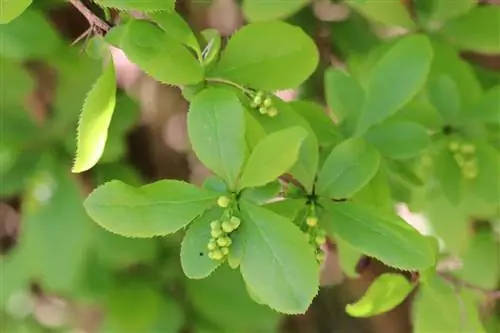
Not only children can be poisoned by barberry. If dogs or cats come into contact with the “spines”, leaves or especially the roots (e.g. when digging), you should watch out for the same symptoms as in humans. This can also be accompanied by tiredness, exhaustion or, in cats, a sudden urge to gag. In rare cases, increased saliva production can be noticed. Fortunately, dogs don't get poisoned very often because the bushes are covered in thorns and the berries are too acidic. However, you should not play with or chew on the following parts of the plant:
- branches
- Root pieces
- Bark
Puppies in particular play with basically anything they can find. With these, pay particular attention that they are not near a sour thorn. The plant is just as dangerous for your cat as it is for puppies, regardless of age, as they often chew the plants when they are outdoors.
As soon as you notice the symptoms in your cat or dog and there is a barberry nearby, do the following:
- Contact vet
- Take plant samples with you
- Blocking access to Berberis
Note:
Also make sure that small animals such as hamsters, guinea pigs, rabbits and others do not eat any parts of the sour thorn. The effect is more intense because the body size is significantly smaller and even the smallest amounts are enough for severe poisoning.
Effect on horses
Horses are among the farm animals that are most often affected by barberries. The reason for this is the taste of the fruits, which the mounts enjoy extremely well. This is exactly what makes cultivating sourthorn near horses so problematic. While the animals try to reach the small fruits, they eat the leaves at the same time. One bush is therefore enough to cause poisoning. The following symptoms may occur:
- sudden diarrhea
- morbid drowsiness
- Kidney inflammation
As soon as you notice the symptoms mentioned and barberries nearby, for example as a hedge, you do not need to contact the vet immediately. Only monitor the animals for a certain period of time, because the symptoms can subside again if no more plant parts are consumed.
Note:
Not only mounts can be poisoned by barberries, but all farm animals. Goats and sheep are particularly at risk and should not come into contact with the plant.
Sources:
hund.info/wp-content/uploads/2015/09/Giftpflanzen_Hunde.pdf
pferde.world/pferde/berberitze-sauerdorn-berberis-vulgaris/
www.midtownanimalclinic.com/alphabetical-index-poisonous-plants/

